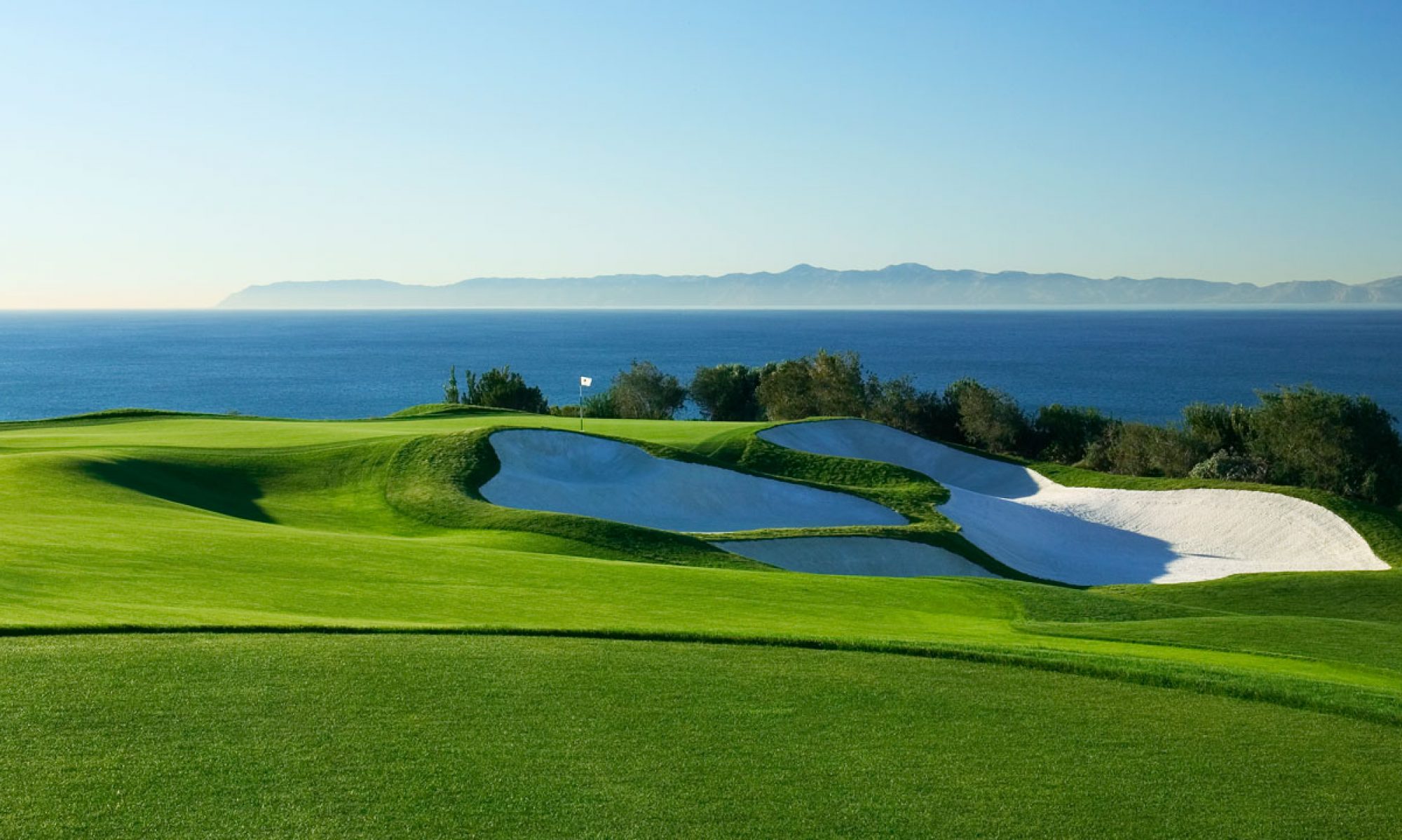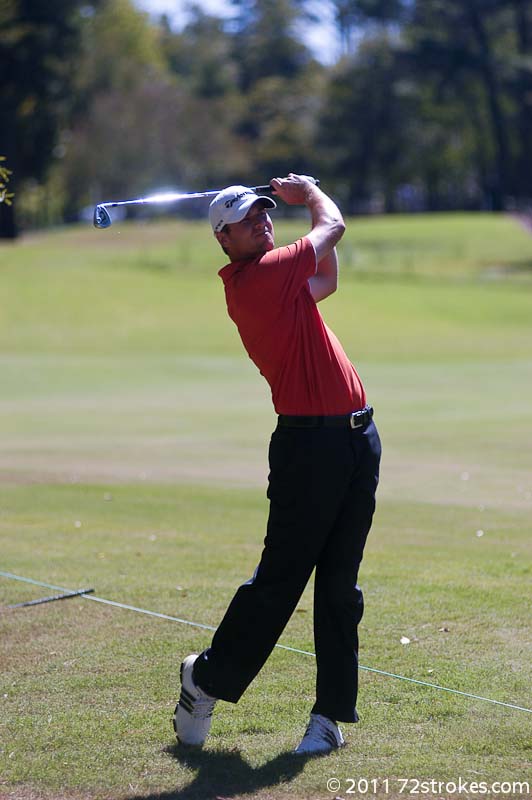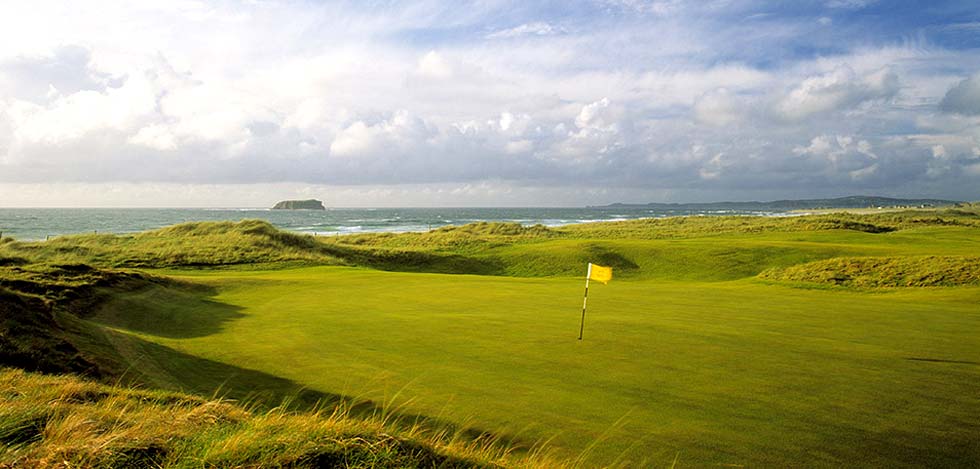Continuing with our series from The Itinerant Golfer’s quest to play all top 100 American golf courses, The Scratch Pad is glad to bring you a profile of the 25th rated golf course in America, Prairie Dunes CC. Click here for other entries on this series click.

Location: Hutchinson, KS
Architect: Perry Maxwell/Press Maxwell
Year Constructed: 1937/1957
Played: October 9, 2010
Prairie Dunes perennially ranks in the Top 25 courses in the US and is a bit of a ‘hidden gem’ among golf nerds . . . well, as much of a hidden gem as you can be when you’re listed in the Top 25 every year.
Because of the golf course’s high ranking on most of the major lists, Prairie Dunes enjoys a very robust non-resident membership, creating an interesting dynamic at the club. On one hand you’ve got your local families who use the club for tennis, golf and swimming and on the other hand you’ve got your hard core golf aficionado crowd with their Pine Valley, Cypress Point and National Golf Links logos bringing in groups of their friends on golf trips. I have to believe there are a number of local members who must scratch their heads and think “why on earth did this guy from New York City join our little club??” I also have to believe that the board of directors meetings get pretty interesting with two distinctly different member groups to serve – each of whom have a different set of needs.
The golf course at Prairie Dunes Country Club has quite an interesting story to it. Perry Maxwell was the first architect on the site who, in 1937, laid out the original nine hole course. The course remained this way for twenty years until his son, Press Maxwell, came along in 1957 to add nine more holes and make a full eighteen hole course. Unfortunately, it wasn’t as simple as just adding holes 10-18 to complete the course. The land that Press wanted to work with didn’t allow him to keep the original number sequence for the first nine holes so he ended up having to do a little renumbering. The original nine holes play today as 1, 2, 6, 7, 8, 9, 10, 17, 18.
At first glance Prairie Dunes doesn’t appear terribly long but it only plays to a par of 70 so the tips that play 6,759 yards are a little longer than they appear. Since it was our first trip around the course we decided to play the 6,153 yard white tees which had a rating of 71.2. That rating translates to 1.2 strokes over par for a scratch golfer and is usually a sign that a course will play fairly tough.
The photo below was taken at the 1st tee. The first hole is a dogleg to the left that played 401 yards from the white tees. If you get too cute and try to go too far to the left there is a ton of rough over there waiting for your ball to nestle down into it. Take note of the brown native grass lining the hole. Out in Kansas they call this “gunsch” and it will swallow a golf ball up just as quick as water does.
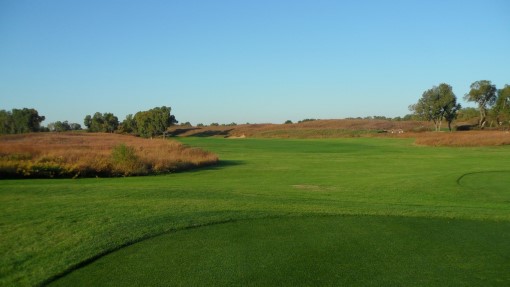 The approach to the 1st green is pictured below. It takes a pretty lengthy and well placed drive to have a short iron into the green. Most of the guys in our group were hitting mid or long irons in.
The approach to the 1st green is pictured below. It takes a pretty lengthy and well placed drive to have a short iron into the green. Most of the guys in our group were hitting mid or long irons in.
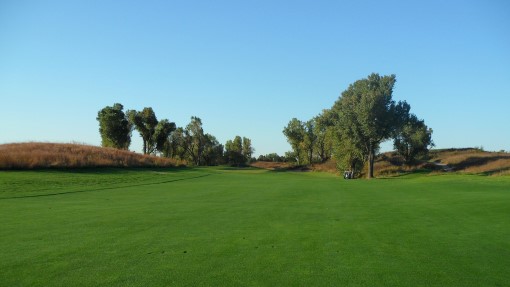
Below is a closer look at the green. It really can’t be seen in this photo but this was a pretty severe green and could be very penal if your ball ends up in the wrong spot.
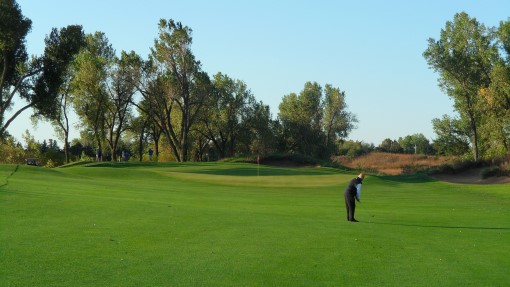
The 2nd hole is a fairly short par 3 that plays 142 yards from the white tees. The green sits at the top of a hill so a little extra club is necessary. The photo below was taken from the tee.
Continue reading “Top 100 Courses: #25 Prairie Dunes Country Club”
